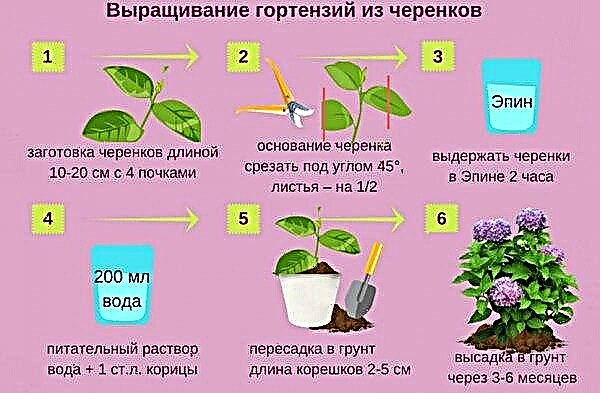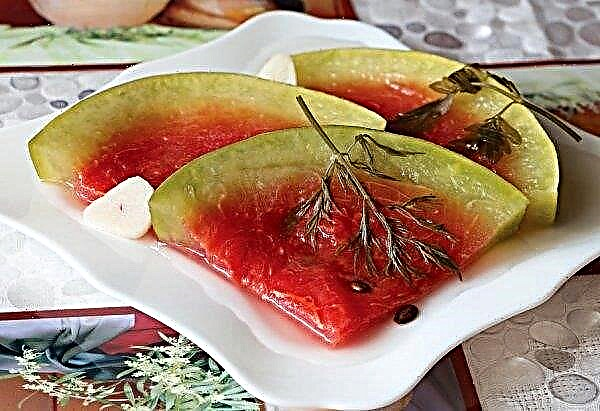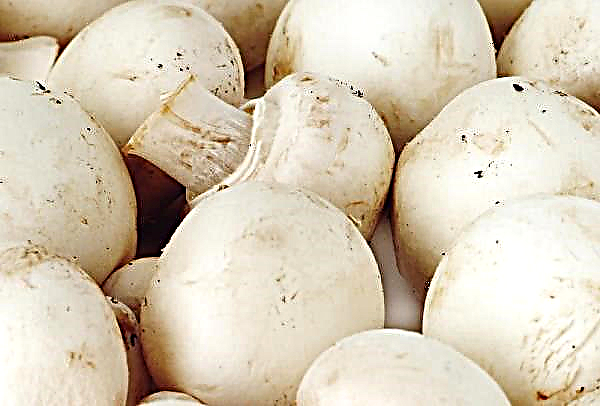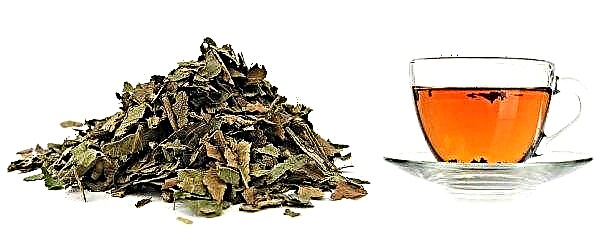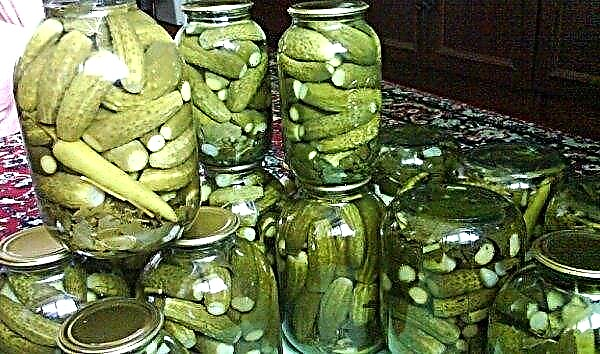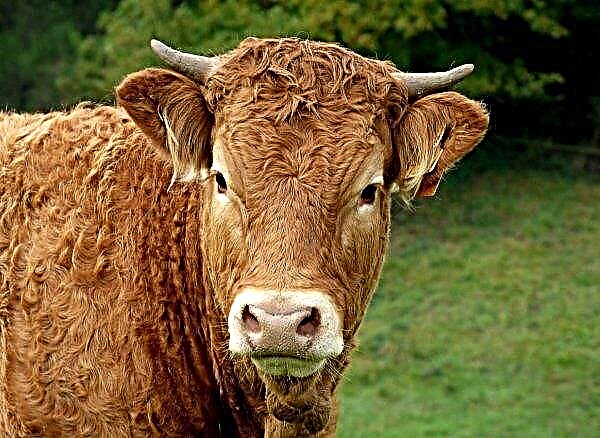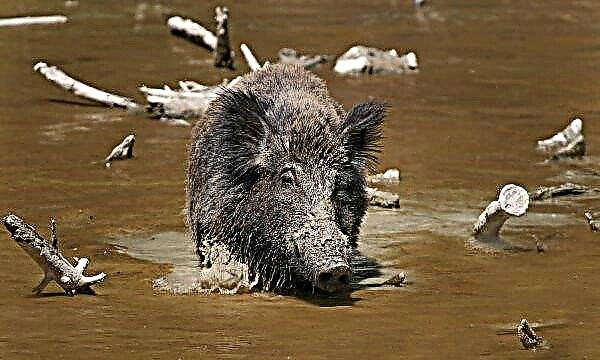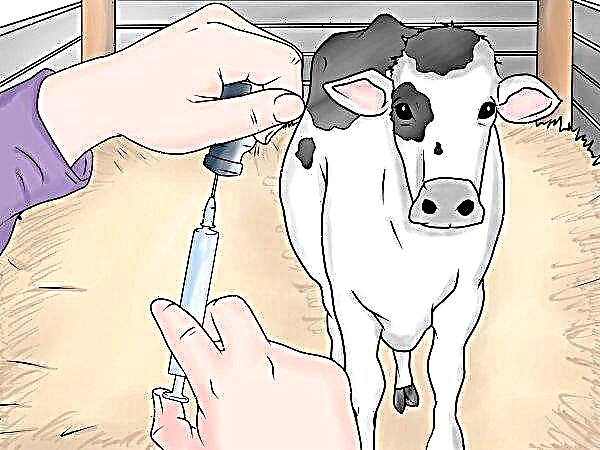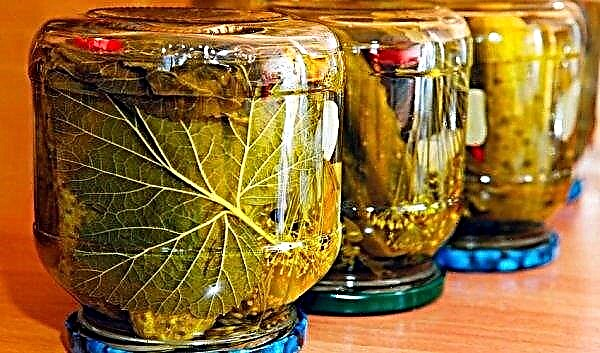Carrots are a favorite root crop that is grown almost everywhere. However, despite the apparent endurance and unpretentiousness, this culture quite often becomes the object of attack by a wide variety of pests, capable of destroying the entire crop in the garden in a short time before our eyes. We will tell you more about which enemies most often parasitize on carrots and how to protect root crops from them.
The main causes of infection and the appearance of parasites
In order to make it easier to protect the future crop, first of all, it is necessary to understand what factors increase the likelihood of crop damage by the most dangerous pests. By eliminating these causes, as a rule, it is possible, if not completely getting rid of future problems, then at least minimizing their threat.
So, the appearance of pests on the carrot bed is facilitated by:
- Crop rotation violation. Growing the same or kindred cultures in one place for several years in a row leads to the fact that parasites, who discovered a favorite treat last year, winter safely in the soil, and in the spring, upon awakening, immediately find themselves in an environment favorable for mass reproduction. In addition, during the season the plants extract from the soil exactly the nutrients that they first need, so the soil when planting the same type of crops becomes poorer from year to year and becomes completely unfavorable for them. Carrots, in particular, cannot be planted after cumin, celery, coriander, potatoes, turnips. Cabbage as well as peas, beans and other legumes are well suited as precursors for such crops.
- Dense planting. Many pests feel comfortable in dense thickets where birds of prey cannot reach them, the wind and the scorching rays of the sun do not bother.
- Incorrect soil composition. A neutral or slightly acidic environment is suitable for carrots, with an increased acidity of the soil, the plant develops poorly and is sick, and some parasites, for example, wireworm, in this soil, on the contrary, feel great.
- Waterlogged soil. Elevated soil moisture is a favorable habitat not only for fungal infections, but also for many other soil parasites.
- Weeds. Extraneous grass in the garden draws nutrients from the soil onto itself, obscures the light of the cultivated plant, but, in addition, is a suitable food and a kind of “reserve” for some pests. In particular, the wireworm already mentioned during the first year of life cannot harm root crops, but it eats the roots of weeds growing nearby with pleasure. If there is enough food, the larva will grow, grow stronger and begin to destroy the crop at an incredible speed by next year.
- Ants. These indestructible and ubiquitous insects by themselves do not harm crops, but are active carriers of aphids (the word "carrier" in this case is used in the literal sense, since ants plant aphids on plants purposefully: the honey dew secreted by this parasite is a favorite ant treat )
- Poor seed quality. Adverse and hungry winter time insects survive in different ways. Many of them pupate and winter in the soil, while others penetrate the seeds. After the seed germinates, the parasite activates and affects the culture at a very young age.
- Genetic instability of a variety to one or another parasite. Year after year, breeders are producing new varieties and hybrids of carrots, while in the process of selection and various kinds of crosses, scientists are trying to consolidate different useful properties in the new generation, including immunity to various pests. This feature is important to consider when choosing a variety, focusing on those problems that are most characteristic of the area. So, carrot fly is practically not afraid of such varieties as Perfection, Flacco, Olympus, Nantes, Vitamin, among hybrids Calgeri F1 is resistant to this parasite.
Did you know? The use of chemicals to control insect pests in recent years has been increasingly criticized by scientists. So, it is estimated that only in the last half century at least 2.5 thousand species of parasites have appeared in the world that show complete resistance to the action of a particular chemical that was previously considered effective.
Some agronomic tricks help reduce the likelihood of carrot damage by pests, for example:
- landing in the immediate vicinity of a bed of plants whose smell repels harmful insects;
- regular loosening of the soil during the season, as well as its deep digging for winter and early spring (larvae and pupae located in the ground, appearing on the surface, die from the sun, frost or gobble by birds);
- garden shelter tissue during the period of active oviposition, the most characteristic parasites for a given site (the purpose of such an event is the physical prevention of imago to the plant);
- timing for planting and harvesting in such a way that, during the period of maximum parasite activity, root crops would be inaccessible to them (not yet planted or already harvested).

Common carrot pests and their control
Alas, carrots are tasted not only by humans, but also by many other living things. And the fact that the most valuable part of this culture is underground, where the pest devouring it remains invisible and inaccessible, makes the process of identification and control of such a parasite even more difficult. And yet, to effectively protect the crop, you need to be able to recognize the most dangerous enemies of carrots and know how to act when you find them in the garden.
Gall nematode
The gall nematode is a round white worm 1.2–1.5 mm long. By attacking carrots, the pest causes a disease called meloidoginosis. It manifests itself in the fact that the root crop, into which the nematode larva has got, completely changes its shape and appearance: the carrot becomes short, growing no more than 4 cm in length, often forming somewhat ugly thin processes grown together.
Important! The intense bitter aroma of marigolds is a preventive measure of protection against the nematode, but after the worm is damaged by the worms, it does not make sense to use infusions from this plant for processing.
It is very difficult to notice signs of damage to the beds on the surface, although due to improper root development, the green part of the plant begins to lag behind in growth and wither. A proven folk way to prevent the emergence of nematodes in the garden is to land marigolds in the aisles. To combat nematodes, drugs from a series of nematicides are used. These include, in particular, such means as Marshal, Tiazon, Geterofos, Miral, Nemakur, Karbation, Terakur and others. There are also biological nematicides, which are spores of carnivorous fungi that destroy pathogenic microflora in the soil. As an example of such a drug can be called "Nematodos." The use of such products does much less harm to the environment and human health than chemical pesticides, however, bionematocides are only good for preventing serious infection and for prophylactically reducing the number of pests in the soil, but when the problem has taken alarming proportions, sparing measures will not solve it.
There are also biological nematicides, which are spores of carnivorous fungi that destroy pathogenic microflora in the soil. As an example of such a drug can be called "Nematodos." The use of such products does much less harm to the environment and human health than chemical pesticides, however, bionematocides are only good for preventing serious infection and for prophylactically reducing the number of pests in the soil, but when the problem has taken alarming proportions, sparing measures will not solve it.
Naked slugs
Bare slugs are gastropod mollusks about 6 cm long, very similar in appearance to snails without a “house”. These pests live in moist foliage, under stones and in other secluded places, reproducing throughout the summer. From the moment of birth to full maturity, the slug passes only 2-3 weeks.
Important! Slugs have many natural enemies, primarily among birds. Therefore, attracting feathered helpers to the site (by installing birdhouses, planting hedges from berry bushes, etc.) is a good way to deal with the pest.
Shellfish can cause very serious damage to carrots if they are not detected on time. In addition to the pest itself, clearly visible due to its large size, its life activity can be recognized by the characteristic moist traces that it leaves behind. Another proven method of expelling slugs from the garden is to plant nearby fragrant plants such as basil, caraway seeds, onions, garlic, oregano, sage or mustard. Among the chemicals used against bare slugs, mention should be made of iron sulfate, metaldehyde and hydrated lime.
Another proven method of expelling slugs from the garden is to plant nearby fragrant plants such as basil, caraway seeds, onions, garlic, oregano, sage or mustard. Among the chemicals used against bare slugs, mention should be made of iron sulfate, metaldehyde and hydrated lime.
Medvedka
The bear, also known as cabbage or cabbage, is a large, up to 5 cm long, predatory insect whose body is covered with a protective shell. In addition to worms, larvae and other protozoa, it feeds on plant roots, destroying beets, carrots, potatoes and other root crops with special appetite. The carrot affected by the bear is unsuitable for eating due to the huge gaping holes made by the pest in the pulp and leading to its complete decay.
Recognizing the presence of an enemy in the garden, in addition to withering and slowing down the growth of various crops, is possible by the characteristic whistle issued by the imago late in the evening and at night. Folk methods of fighting a bear are based on finding its holes and pouring directly into them up to 2 liters of water diluted with vinegar, sunflower oil or washing powder, however, the latter remedy raises serious doubts in terms of its environmental friendliness. Various traps are also used - glass, honey, beer, dung, etc., allowing you to catch the pest and destroy it physically, and even electronic repellers. On an industrial scale, insecticides are used against the bear, in particular, Medvetoks, Medvetsid, Boverin, Phenaxin Plus, Rembek, etc.
Various traps are also used - glass, honey, beer, dung, etc., allowing you to catch the pest and destroy it physically, and even electronic repellers. On an industrial scale, insecticides are used against the bear, in particular, Medvetoks, Medvetsid, Boverin, Phenaxin Plus, Rembek, etc.
Carrot leaf
This tiny green winged insect has a body length of no more than 2 mm. Unlike most other pests, it parasitizes not in the roots, but on the leaves (in addition to carrots, it also likes celery), but the symptoms of damage are still not immediately noticeable.
Important! XA characteristic sign of the vital activity of the carrot leaf foliage is the acquisition of unusual curly leaves while maintaining their color and even density.
The toxins that the leafflake brings to the deciduous part of the carrots directly affect root crops - they drastically slow their development and acquire a distinct bitterness. A popular way to combat pest is to process the beds with tobacco infusion. Among the pesticides that are highly effective in destroying carrot leaf flakes, one can mention Actellik, Sumicidin, Alatar, Vantex, Tsimbush and Borey.
Carrot moth
Carrot moth is an insect with a yellow body slightly less than 2 cm long and two pairs of multi-colored wings (upper brown, darker, lower light, dirty pink). On carrots and other plants of the family, parasitic larvae, that is, caterpillars of carrot moths, parasitize. Their traces can be found on the numerous cobwebs with which they envelop the inflorescence.
Fighting the pest is helped by treatment of the bed with biological products such as Entobacterin, Ultrafit or Lepidocide. More effective, but less safe are traditional insecticides - "Beetle Off", "Dragoon", "Coragen" and others.
Carrot fly
A carrot fly is a small, no more than 5 mm, insect with transparent wings and a thin shiny back. In early spring, the insect gets out of the ground, where it was in a pupated state, and begins to lay eggs. As a place for masonry, the fly usually chooses the base of the carrot bush in order to provide the larvae hatched from the eggs with a sufficient amount of food. Light yellow headless caterpillars devouring root crops from the inside are the larvae of the carrot fly. During a season, two generations of insects manage to form in warm climatic zones.
Since the parasite acts in the soil, it is not immediately possible to detect its traces. Presumably, this can be judged when the carrot, for no apparent reason, slows down its growth, its aerial part begins to wilt due to the damaged root, sometimes acquiring a brown tint. Trying to dig up the root crop of such a plant, around it you can see gnawed roots. The carrot itself is mottled from within by many narrow passages with dark brown traces of bowel movements. Also, rotted areas are often present on root crops. To scare away a carrot fly, you can try using folk remedies, namely spraying the plant with infusions that have a pronounced pungent odor, for example, based on:
To scare away a carrot fly, you can try using folk remedies, namely spraying the plant with infusions that have a pronounced pungent odor, for example, based on:
- tobacco
- garlic
- pepper (hot or ground black);
- mustard powder;
- wormwood.
Video: carrot fly
Wireworm
The wireworm is not an insect, but its larva. An adult is called a nutcracker. It has small dimensions, a black skinny body and is characterized by a very high jumping ability, and in the jump it emits characteristic clicking sounds, from where it got its name. Such beetles are widespread almost everywhere, and their population is so large that they can only be protected from the invasion of the parasite with the help of potent highly toxic pesticides, and even then not for long.
Therefore, it is better to fight the pest with preventive methods aimed at preventing its too active reproduction. Adult bugs, however, do no harm to plants, only their larvae are dangerous. The trouble, however, is that in the form of a larva, a nutcracker beetle spends the vast majority of its life, and it lives 3-4 years.
Did you know? The name “wireworm” was obtained by the beetle larva due to the color and structure of the outer cover, very similar to copper wire. The names of these larvae in some other languages have a similar etymology, for example, the English “wireworm” (literally - a worm-wire) or the German “drahtwurm” (worm-wire).
The wireworms are longer and larger than the larvae of the carrot fly, in addition, unlike the latter, they are almost omnivorous and parasitize in the root system of many cultivated plants, including almost any root crop. External signs of the appearance of a wireworm on a carrot bed, as in the case of a carrot fly, are not obvious - growth retardation, wilting, drying of leaves. But due to their larger size, these parasites also bring related problems: the broken integrity of the root crops causes the carrots to begin to infect various fungal diseases, first of all, all kinds of rot.
But due to their larger size, these parasites also bring related problems: the broken integrity of the root crops causes the carrots to begin to infect various fungal diseases, first of all, all kinds of rot.
Damaged root crops can be observed in any direction (the wireworm in the soil can move both horizontally and vertically) or clearly visible black dots - healed scars from the movement of younger larvae. The wireworm feels very comfortable in acidic soil, so a specific way to get rid of the pest is to add lime or chalk to the soil.
It is sometimes possible to expel a parasite from the soil using such folk remedies as:
- dandelion;
- mother and stepmother;
- celandine;
- Stinging nettle.
A saturated infusion is prepared on the basis of any of these plants, which is then abundantly watered.Potassium permanganate (0.5 g per 1 liter of water) can also be used as a disinfectant. If such events have not yielded results, resort to the help of insecticidal drugs, such as, for example, "Antichrush", "Politrin", "Initiator", "Decis", "Prestige", "Cosmos" and others.
Winter scoop
Winter scoop - a type of so-called gnawing scoop. These are not very attractive butterflies 3-4 cm in size; they have dirty brown wings with black spots. The sizes of their larvae are approximately the same, because the caterpillars would be clearly visible if they did not go on a “hunt” mainly at night. Carrots are not an exceptional food for winter scoop larvae; this parasite is a “universal” enemy for a large number of crops.
The caterpillars of the winter scoop parasitize not only in the roots, but also on the green parts of the plant, gnawing young leaves and shoots, therefore, the characteristic signs of the appearance of this pest on the beds are the simultaneous withering of the plant, which indicates damage to its root system, and the presence of gnawed fragments on the stems and leaves, especially at the bottom of the bush. Root crops affected by the scoop have ugly and uneven flaws, more like hollows than narrow passages left by other caterpillars.
Important! The winter scoop lays up to eight hundred eggs at a time, and during the season it can form up to three generations in parallel, that is, adult individuals continue to breed in parallel with their own “children” and “grandchildren”.
At the first stages of infection, you can get rid of the scoop with the help of abundant surface irrigation carried out late in the evening. Effective and safe drugs for pest control are Lepidocide and Metarazin. Of the traditional insecticidal agents against scoops, Arrivo, Politrin, Calypso, Fury, Inspector, Confidor Maxi, Proteus, Match, etc. are usually used.
Aphid
Aphids - a tiny omnivorous insect that feeds on the sap of plants, is one of the most common enemies of any gardener. It is very easy to recognize signs of imminent danger from the egg-laying, characteristic and clearly visible to the naked eye, appearing on the back of the leaf plate, while adult insects are visible on the front of the leaves and stems as multiple black dots.
It is best to fight aphids with folk methods by attracting insects to the plot that are the natural enemies of this pest (a classic example is a ladybug), or planting plants that repel the parasite. For example, aphids really do not like the smell of horseradish, onions, garlic, tobacco, wormwood, chamomile and hot pepper. But nasturtium, peas, petunia, poppy, mallow and some other flower and garden crops of this pest, on the contrary, attract.
Did you know? The ability of aphids to quickly reproduce is so strong that some insects are born already pregnant and 10-12 days after birth produce a new generation of pests.
Having noticed the egg laying on the leaves, the aerial part of the plant should be treated with soapy water as soon as possible, making sure that all eggs are washed away. As a treatment tool, you can also use infusion of wormwood, dandelion, garlic or onion, but to increase the contact of the solution with the green parts of the plant, it is still better to add a little grated soap or liquid soap to the prepared preparation. It is worth resorting to toxic insecticides to control aphids only in extreme cases, for example, drugs such as Intavir and Fufanon are often used for these purposes. Among the huge number of varieties of aphids on a carrot bed, you can find several.
It is worth resorting to toxic insecticides to control aphids only in extreme cases, for example, drugs such as Intavir and Fufanon are often used for these purposes. Among the huge number of varieties of aphids on a carrot bed, you can find several.
Measures to combat them are identical, so distinguishing one species of insect from another is not so important. The following characteristics of the most common aphid parasitic species on carrots are mentioned only so that some differences in the external signs of the pest do not prevent the gardener from recognizing aphids in this insect.
Hawthorn aphid
Hawthorn aphid (Latin name - Dysaphis crataegi) is a big lover of carrots. These small, no more than 1.8 mm long, black or green insects usually live in hawthorn, but they lay eggs on carrot shoots, where young insects actively feed, causing serious damage to the crop, and at the end of summer they move to hawthorn. The pest is very widespread in the southern regions of the middle zone of the European part of Russia, Western Europe, Transcaucasia and Central Asia.
The pest is very widespread in the southern regions of the middle zone of the European part of Russia, Western Europe, Transcaucasia and Central Asia.
Willow Carrot Aphid
This pest (Latin name - Cavariella aegopodii) is a tiny greenish flea with a body length of about 2 mm. Most often, willow-carrot aphids parasitize on carrots, parsnips and dill. The life cycle of the insect is similar to the hawthorn aphid, but, unlike the latter, willow-carrot aphid prefers to live in the bark of willow and some shrubs. For this reason, it is recommended to form carrot beds away from trees and bushes.
Carrot aphid
Carrot aphids (Latin name - Semiaphis dauci) are slightly smaller than its hawthorn and willow-carrot “cousins”: the body length of the insect is 1.5–1.7 mm. And yet, in a sense, this pest can be called the most dangerous, because, unlike the two above, this species not only lays eggs and forms a new generation of insects on carrots, but also connects its entire life cycle with it. In addition to carrots, Semiaphis dauci develops on all cultures of the Umbrella family - caraway seeds, celery, parsley, cilantro, etc.
In addition to carrots, Semiaphis dauci develops on all cultures of the Umbrella family - caraway seeds, celery, parsley, cilantro, etc.
Features of the fight against rodents
Unfortunately, not only insects can damage the carrot crop, but also rodents - mice, moles, mole rats, etc. It is much more difficult to deal with such pests, since any pesticides that can destroy such a large animal pose a serious threat to people, especially children as well as pets.
Therefore, the best protective measures against rodents are a variety of traps and repelling devices (ratchets, impellers, as well as any other ringing, rattling or vibrating devices to which field and ground animals are very sensitive).
Important! Pets often help to fight rodents in the area, and in this capacity not only cats, but also dogs, especially representatives of hunting breeds, show great interest in finding pests even in deep burrows.
Planting such plants as elderberry, mint, anise, and parsnip also gives a good effect. In addition, it was noticed that the mice really do not like the smell of citrus fruits, so you can try to water the carrots with water infused with orange or lemon peels.
Preventive treatment of carrots from pests
In order not to resort to the use of highly toxic chemicals for treating carrots from a pest that has already hit it, many farmers use the method of preventive treatment of the garden bed, which allows metered and reasonable preparation of plants for future danger, scare the parasites from the crop and, thus, save the future crop without damage to its quality and environmental safety.
The standard scheme involves two treatment beds for prevention:
| Time of processing | A drug | Method of use |
| Phase 4-6 leaves | "ATO Beetle" | 3 ml of the drug per 10 liters of water |
| Phase 6–9 leaflets | Fas | 4 ml of the drug per 10 liters of water |
You can protect yourself from numerous pests that infect carrots in various ways. To do this, there are highly effective, but far from perfect from the point of view of possible consequences for health insecticides, milder alternative methods, as well as modern biological preparations that specifically target the parasite and are safe for people and the environment as a whole.
However, the wisest and most reliable way to get a good harvest of tasty and healthy carrots is to strictly observe the rules for growing them and create conditions that do not allow insects, ticks, rodents and other "enemy agents" to settle firmly in their area.

